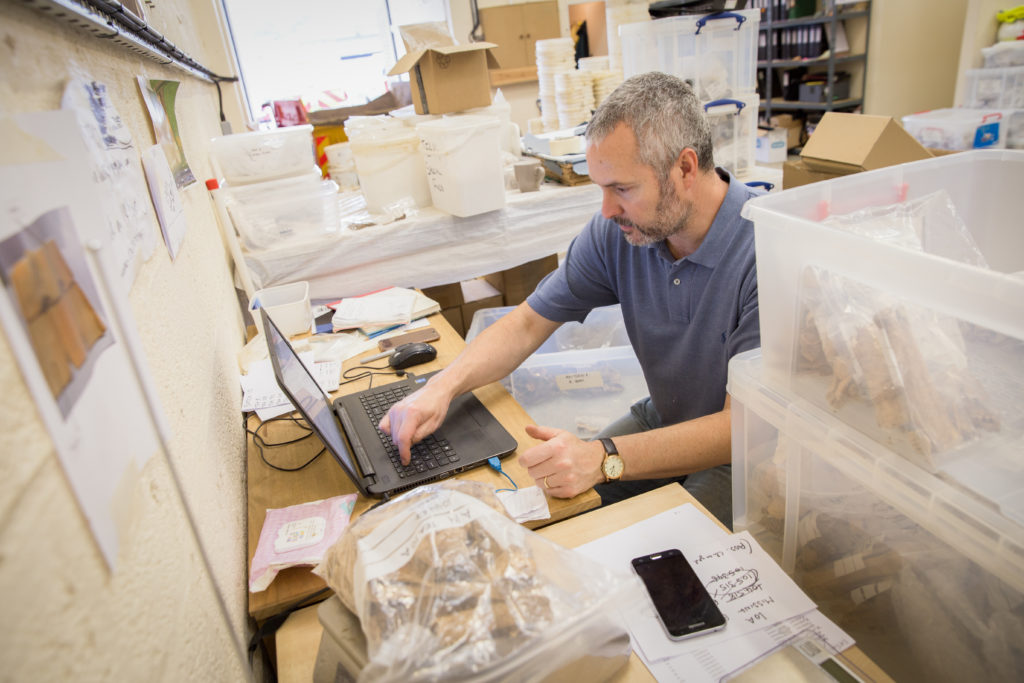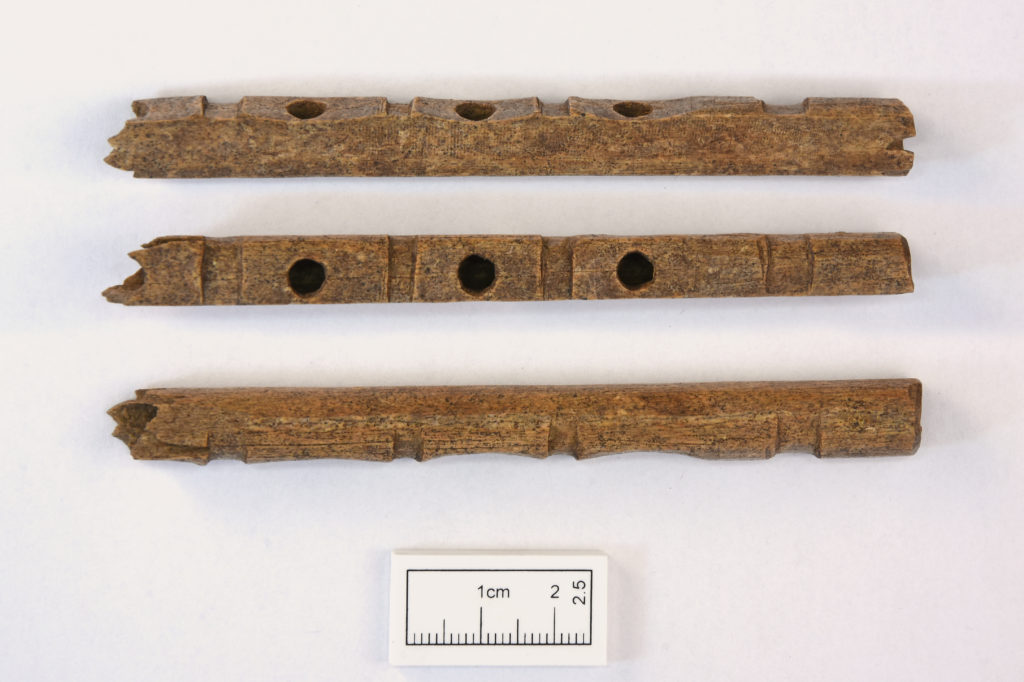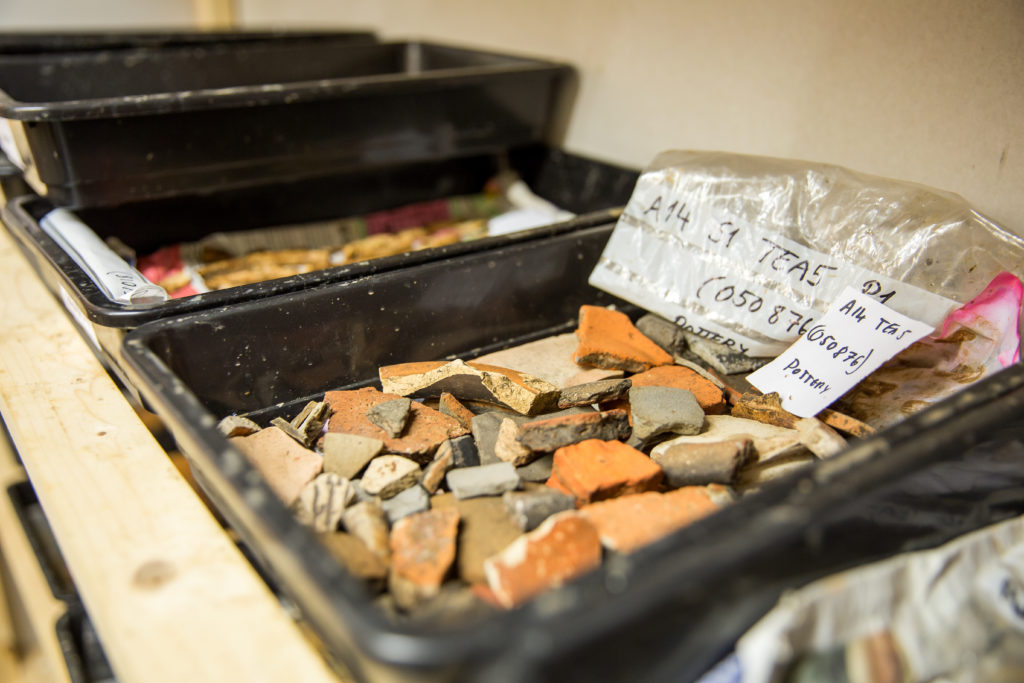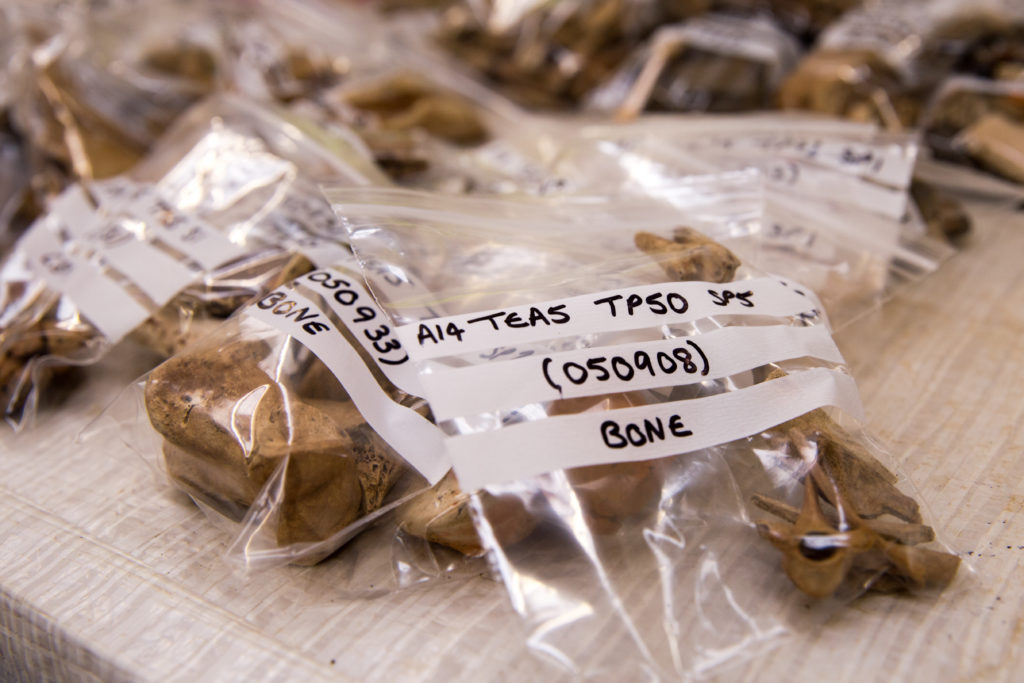We’ve been catching up with a few of the specialists bringing their archaeological skills to the A14 Cambridge to Huntingdon improvement scheme, based at the MOLA Headland Infrastructure processing base in St Neots.
Today we meet the Finds Supervisor, Dr Jim McKeon, who has been managing the processing of 2,000 kilogrammes (almost 2 tons – the weight of an adult rhino) of finds from the 13,000 kg or so expected to be recovered by the end of the excavations. Jim has been working on the project since June 2017. With 15 years’ experience in the archaeological and heritage sectors, he has worked on lots of excavations, predominantly in Ireland.
What does a typical day involve?
I spend much of my time logging-in and checking finds that are delivered to the St Neots warehouse, from the various excavation sites along the route of the A14C2H road scheme. We have to know exactly where every artefact comes from and how it fits into the site’s story.

We enter information about the finds into a database and get them ready to be moved on for further analysis, conservation and storage by other specialist teams. Much of my work involves accurate data-entry so that we can track how the object fits into a site’s story, and packaging up finds to protect them from damage when they are stored or transported.
What type of finds are being excavated and studied?
The finds here are mostly pottery sherds (fragments), building material (like tiles) and animal bones, but we do also sometimes deal with human remains. The more special finds are listed as ‘small finds’. These include metal and glass objects, flint tools, worked stone objects and bone artefacts – combs, lamps and military equipment for example. Pottery that has been re-purposed, stamped with a maker’s mark or includes graffiti (scratched decoration or writing) is also considered a ‘small find’.
How will the finds help us to learn more about local Cambridgeshire people in the past?
Together with the archaeological features (well, kilns and ditches for example) excavated on site, finds tell us a lot about the people who used, discarded or lost them. They help us to date the features in which they were found; indicate what kind of people owned or used them – like soldiers, farmers, royalty or peasants; and understand the activities taking place at a site – pottery production, farming, metal-working or ceremonial activities.
For pottery, we can find out if it was locally made or imported from elsewhere. Sometimes Roman pottery is stamped with a maker’s mark which means experts can tell exactly where and when it was produced, and by whom.
What is the most interesting item you have found and why?
Many interesting and exciting finds have passed through the warehouse since I have been here. One of my personal favourites is an Anglo-Saxon flute carved from bone. Very few of these have been found in Britain and it helps us to understand more about the cultural and musical traditions of Saxon England.

How does your work fit into the whole project?
Finds are a key part of any archaeological project – but excavations and finds processing are just the beginning of our research. When all the different strands are pulled together – site plans, photos, reports, specialist analyses of finds, human remains and environmental samples – they reveal the bigger picture of historical and prehistoric settlement, use and manipulation of the Cambridgeshire landscape.
Join us on our journey
- @A14C2H #A14Archaeology
- facebook.com/A14C2H/ #A14Archaeology
- Come to one of our community archaeology events
- Find out more about the A14C2H improvement scheme here
The archaeological programme for the Cambridge to Huntingdon improvement scheme is being carried out by A14 Integrated Delivery Team on behalf of Highways England.

